Early nasal intermittent positive pressure ventilation (NIPPV) versus early nasal continuous positive airway pressure (NCPAP) for preterm infants
- PMID: 37466143
- PMCID: PMC10355255
- DOI: 10.1002/14651858.CD005384.pub3
Early nasal intermittent positive pressure ventilation (NIPPV) versus early nasal continuous positive airway pressure (NCPAP) for preterm infants
Abstract
Background: Nasal continuous positive airway pressure (NCPAP) is a strategy to maintain positive airway pressure throughout the respiratory cycle through the application of a bias flow of respiratory gas to an apparatus attached to the nose. Early treatment with NCPAP is associated with decreased risk of mechanical ventilation exposure and might reduce chronic lung disease. Nasal intermittent positive pressure ventilation (NIPPV) is a form of noninvasive ventilation delivered through the same nasal interface during which patients are exposed to short inflations, along with background end-expiratory pressure.
Objectives: To examine the risks and benefits of early (within the first six hours after birth) NIPPV versus early NCPAP for preterm infants at risk of or with respiratory distress syndrome (RDS). Primary endpoints are respiratory failure and the need for intubated ventilatory support during the first week of life. Secondary endpoints include the incidence of mortality, chronic lung disease (CLD) (oxygen therapy at 36 weeks' postmenstrual age), pneumothorax, duration of respiratory support, duration of oxygen therapy, and intraventricular hemorrhage (IVH).
Search methods: Searches were conducted in January 2023 in CENTRAL, MEDLINE, Embase, Web of Science, and Dissertation Abstracts. The reference lists of related systematic reviews and of studies selected for inclusion were also searched.
Selection criteria: We considered all randomized and quasi-randomized controlled trials. Eligible studies compared NIPPV versus NCPAP treatment, starting within six hours after birth in preterm infants (< 37 weeks' gestational age (GA)).
Data collection and analysis: We collected and analyzed data using the recommendations of the Cochrane Neonatal Review Group.
Main results: We included 17 trials, enrolling 1958 infants in this review. NIPPV likely reduces the rate of respiratory failure (risk ratio (RR) 0.65, 95% confidence interval (CI) 0.54 to 0.78; risk difference (RD) -0.08, 95% CI -0.12 to -0.05; 17 RCTs, 1958 infants; moderate-certainty evidence) and needing endotracheal tube ventilation (RR 0.67, 95% CI 0.56 to 0.81; RD -0.07, 95% CI -0.11 to -0.04; 16 RCTs; 1848 infants; moderate-certainty evidence) amongst infants treated with early NIPPV compared with early NCPAP. The meta-analysis demonstrated that NIPPV may reduce the risk of developing CLD compared to CPAP (RR 0.70, 95% CI 0.52 to 0.92; 12 RCTs, 1284 infants; low-certainty evidence) slightly. NIPPV may result in little to no difference in mortality (RR 0.82, 95% CI 0.62 to 1.10; 17 RCTs; 1958 infants; I2 of 0%; low-certainty evidence), the incidence of pneumothorax (RR 0.92, 95% CI 0.60 to 1.41; 16 RCTs; 1674 infants; I2 of 0%; low-certainty evidence), and rates of severe IVH (RR 0.98, 95% CI 0.53 to 1.79; 8 RCTs; 977 infants; I2 of 0%; low-certainty evidence).
Authors' conclusions: When applied within six hours after birth, NIPPV likely reduces the risk of respiratory failure and the need for intubation and endotracheal tube ventilation in very preterm infants (GA 28 weeks and above) with respiratory distress syndrome or at risk for RDS. It may also decrease the rate of CLD slightly. However, most trials enrolled infants with a gestational age of approximately 28 to 32 weeks with an overall mean gestational age of around 30 weeks. As such, the results of this review may not apply to extremely preterm infants that are most at risk of needing mechanical ventilation or developing CLD. Additional studies are needed to confirm these results and to assess the safety of NIPPV compared with NCPAP alone in a larger patient population.
Copyright © 2023 The Cochrane Collaboration. Published by John Wiley & Sons, Ltd.
Conflict of interest statement
BL was an author of an included study (Kirpalani 2013). This study was funded by the Canadian Institutes of Health Research. She requested data from the study for inclusion in the review (data extracted by the trial statistician, R. Roberts). Roger Soll, Co‐ordinating editor, Cochrane Neonatal assessed RoB and undertook GRADE assessment for this data. R. Soll does not have any interests to disclose at this time.
PB does not have any interests to disclose at this time.
HK was the PI of one of the trials noted in the review (Kirpalani 2013); he did not participate in selecting or abstracting data for this study.
OAE has published review articles that relate to CPAP and NIPPV.
PGD declared an ongoing National Health and Medical Research Council Grant.
Figures

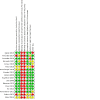

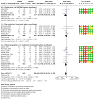
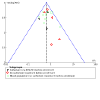

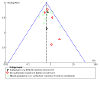

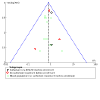
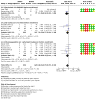
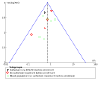
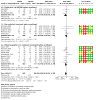
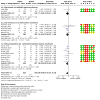
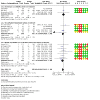
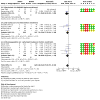

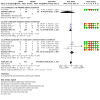
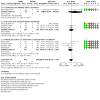
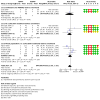
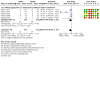
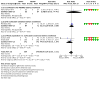

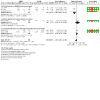
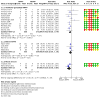
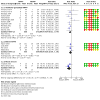
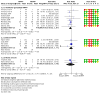
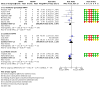
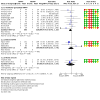
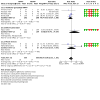
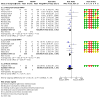
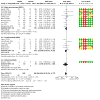
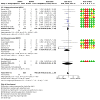
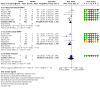
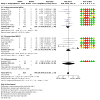
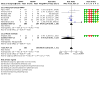
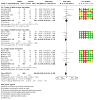
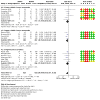
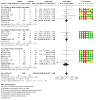
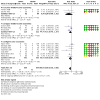
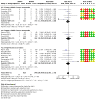
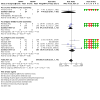

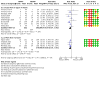
Update of
-
Early nasal intermittent positive pressure ventilation (NIPPV) versus early nasal continuous positive airway pressure (NCPAP) for preterm infants.Cochrane Database Syst Rev. 2016 Dec 15;12(12):CD005384. doi: 10.1002/14651858.CD005384.pub2. Cochrane Database Syst Rev. 2016. Update in: Cochrane Database Syst Rev. 2023 Jul 19;7:CD005384. doi: 10.1002/14651858.CD005384.pub3. PMID: 27976361 Free PMC article. Updated.
References
References to studies included in this review
Aguiar 2015 {published data only}
-
- Aguiar T, Macedo I, Voutsen O, Silva P, Nona J, Araujo C, et al. Nasal bilevel versus continuous positive airway pressure in preterm infants: a randomized controlled trial. Journal of Clinical Trials 2015;5(3):1000221. [DOI: 10.4172/2167-0870.1000221] - DOI
Armanian 2014 {published data only}
-
- Armanian AM, Badiee Z, Heidari G, Feizi A, Salehimehr N. Initial treatment of respiratory distress syndrome with nasal intermittent mandatory ventilation versus nasal continuous positive airway pressure: a randomized controlled trial. International Journal of Preventive Medicine 2014;5(12):1543-51. [PMID: ] - PMC - PubMed
Armanian 2019 {published data only}
-
- Armanian AM, Iranpour R, Parvaneh M, Salehimehr N, Feizi A, Hajirezaei M. Heated humidified high flow nasal cannula (HHHFNC) is not an effective method for initial treatment of respiratory distress syndrome (RDS) versus nasal intermittent mandatory ventilation (NIMV) and nasal continuous positive airway pressure (NCPAP). Journal of Research in Medical Sciences 2019;24:73. [DOI: 10.4103/jrms.JRMS_2_19] [PMID: ] - DOI - PMC - PubMed
Bisceglia 2007 {published and unpublished data}
-
- Bisceglia M, Belcastro A, Poerio V, Raimondi F, Mesuraca L, Crugliano C, et al. A comparison of nasal intermittent versus continuous positive pressure delivery for the treatment of moderate respiratory distress syndrome in preterm infants. Minerva Pediatrica 2007;59(2):91-5. [PMID: ] - PubMed
Dursun 2019 {published data only}
-
- Dursun M, Uslu S, Bulbul A, Celik M, Zubarioglu U, Bas EK. Comparison of early nasal intermittent positive pressure ventilation and nasal continuous positive airway pressure in preterm infants with respiratory distress syndrome. Journal of Tropical Pediatrics 2019;65(4):352-360. [DOI: 10.1093/tropej/fmy058] - DOI - PubMed
Farhat 2018 {published data only}
-
- Farhat AS, Mohammadzadeh A, Mamuri GA, Saeidi R, Noorizadeh S. Comparison of nasal non-invasive ventilation methods in preterm neonates with respiratory distress syndrome. Iranian Journal of Neonatology 2018;9(4):53-60. [DOI: 10.22038/ijn.2018.24544.1313] - DOI
Gharehbaghi 2019 {published data only}
-
- Gharehbaghi MM, Hosseini MB, Eivazi G, Yasrebinia S. Comparing the efficacy of nasal continuous positive airway pressure and nasal intermittent positive pressure ventilation in early management of respiratory distress syndrome in preterm infants. Oman Medical Journal 2019;34(2):99-104. [DOI: 10.5001/omj.2019.20] - DOI - PMC - PubMed
Kirpalani 2013 {published data only}
Kishore 2009 {published data only}
Kugelman 2007 {published data only}
-
- Kugelman A, Feferkorn I, Riskin A, Chistyakov I, Kaufman B, Bader D. Nasal intermittent mandatory ventilation versus nasal continuous positive airway pressure for respiratory distress syndrome: a randomized, controlled, prospective study. Journal of Pediatrics 2007;150(5):521-6. [DOI: 10.1016/j.jpeds.2007.01.032] - DOI - PubMed
Lista 2009 {published data only}
-
- Lista G, Castoldi F, Fontana P, Daniele I, Cavigioli F, Rossi S, et al. Nasal continuous positive airway pressure (CPAP) versus bi-level nasal CPAP in preterm babies with respiratory distress syndrome: a randomised control trial. Archives of Disease in Childhood. Fetal and Neonatal Edition 2009;95(2):F85-9. [DOI: 10.1136/adc.2009.169219] - DOI - PubMed
Meneses 2011 {published and unpublished data}
Oncel 2016 {published data only}
-
- Oncel MY, Arayici S, Uras N, Alyamac-Dizdar E, Sari FN, Karahan S, et al. Nasal continuous positive airway pressure versus nasal intermittent positive-pressure ventilation within the minimally invasive surfactant therapy approach in preterm infants: a randomised controlled trial. Archives of Disease in Childhood. Fetal and Neonatal Edition 2015;101(4):F323-8. [DOI: 10.1136/archdischild-2015-308204] - DOI - PubMed
Pan 2021 {published data only}
-
- Pan R, Chen GY, Wang J, Zhou ZX, Zhang PY, Chang LW, et al. Bi-level nasal positive airway pressure (BiPAP) versusnasal continuous positive airway pressure (CPAP) for preterm infants with birth weight less than 1500 g and respiratory distress syndrome following INSURE treatment: a two-center randomized controlled trial. Current Medical Science 2021;41:542–7. [DOI: 10.1007/s11596-021-2372-8] - DOI - PMC - PubMed
Ramanathan 2012 {published data only}
-
- Ramanathan R, Sekar KC, Rasmussen M, Bathia J, Soll RF. Nasal intermittent positive pressure ventilation after surfactant treatment for respiratory distress syndrome in preterm infants under 30 weeks gestation: a randomized controlled trial. Journal of Perinatology 2012;32(5):336-43. [DOI: 10.1038/jp.2012.1] - DOI - PubMed
Salama 2015 {published data only}
-
- Salama GS, Ayyash FF, Al-Rabadi AJ, Alquran ML, Shakkoury AG. Nasal-IMV versus nasal-CPAP as an initial mode of respiratory support for premature infants with RDS: a prospective randomized clinical trial. Rawal Journal Medical 2015;40(2):197-202. [WEBSITE: www.rmj.org.pk/?mno=173370]
Wood 2013 {published data only}
-
- Wood FE, Gupta S, Tin W, Sinha S. Randomised controlled trial of synchronised intermittent positive airway pressure (SiPAP) versus continuous positive airway pressure (CPAP) as a primary mode of respiratory support in preterm infants with respiratory distress syndrome. Archives of Disease in Childhood 2013;98:A78. [DOI: 10.1136/archdischild-2013-304107.182] [URL: https://adc.bmj.com/content/98/Suppl_1/A78.1] - DOI
References to studies excluded from this review
Abyar 2011 {published data only}
-
- Abyar H, Ghafari V, Nakhshab M, Jafari M, Rahimi N, Asadpour S. Nasal intermittent mandatory ventilation (NIMV) versus nasal continuous positive airway pressure (NCPAP) in weaning from mechanical ventilation in preterm infants [مقایسه تاثیر دو روش تهویه متناوب از راه بینی )NIMV( و فشار مثبت مداوم راه هوایی از راه بینی )NCPAP( در قطع تنفس مصنوعی نوزادان]. Journal of Mazandaran University of Medical Sciences 2011;21(84):113-20. [URL: jmums.mazums.ac.ir/article-1-676-en.html]
Aghai 2006 {published data only}
-
- Aghai ZH, Saslow JG, Nakhla T, Milcarek BB, Hart J, Lawrysh-Plunkett R, et al. Synchronized nasal intermittent positive pressure ventilation (SNIPPV) decreases work of breathing (WOB) in premature infants with respiratory distress syndrome (RDS) compared to nasal continuous positive airway pressure (NCPAP). Pediatric Pulmonology 2006;41(9):875-81. [DOI: 10.1002/ppul.20461] - DOI - PubMed
Askari 2018 {published data only}
-
- Askari RA, Kazemian M, Fallahi M, Afjeh SA, Taleghani NT, Sanii S. Comparison of nasal continuous positive airway pressure and nasal intermittent mandatory ventilation in early respiratory support of very low birth weight infants with respiratory distress syndrome. Journal of Comprehensive Pediatrics 2018;9(2):e66407. [DOI: 10.5812/compreped.66407] - DOI
Bai 2014 {published data only}
-
- Bai XM, Bian J, Zhao YL, Zhang L, Darshana S, Liu ZJ. The application of nasal synchronized intermittent mandatory ventilation in primary apnea of prematurity. Turkish Journal of Pediatrics 2014;56(2):150-3. [PMID: ] - PubMed
Baneshi 2014 {published data only}
Barrington 2001 {published data only}
-
- Barrington KJ, Bull D, Finer NN. Randomized trial of nasal synchronized intermittent mandatory ventilation compared with continuous positive airway pressure after extubation of very low birth weight infants. Pediatrics 2001;107(4):638-41. [PMID: ] - PubMed
Beaullieu 2019 {published data only}
-
- Beaullieu CC, Duyka B, Khan AM. A comparison of non-invasive ventilation methods used to prevent endotracheal intubation due to apnea in infants less than 30 weeks gestational age. Journal of Investigative Medicine 2019;67:611.
Bhandari 2007 {published data only}
Bober 2012 {published data only}
-
- Bober K, Swietlinski J, Zejda J, Kornacka K, Pawlik D, Behrendt J, et al. A multicenter randomized controlled trial comparing effectiveness of two nasal continuous positive airway pressure devices in very-low-birth-weight infants. Pediatric Critical Care Medicine 2012;13(2):191. [DOI: 10.1097/PCC.0b013e3182231882] - DOI - PubMed
Chen 2013 {published data only}
-
- Chen X, Peng WS, Wang L, Xu JL, Dong HF, Pan JH. [A randomized controlled study of nasal intermittent positive pressure ventilation in the treatment of neonatal respiratory distress syndrome]. Zhongguo Dang Dai Er Ke Za Zhi [Chinese Journal of Contemporary Pediatrics] 2013;15(9):713-7. [PMID: ] - PubMed
Chen 2015 {published data only}
CTRI/2018/01/011116 {unpublished data only}
-
- CTRI/2018/01/011116. Comparison of nasal continuous positive pressure versus nasal intermittent positive pressure ventilation in preterm infants on the need for intubation in minimally invasive surfactant therapy approach. https://ctri.nic.in/Clinicaltrials/pmaindet2.php?trialid=20486&EncHi... (first received 02 January 2018). [CENTRAL: CN-01897514]
El‐Farrash 2021 {published data only}
Estay 2020 {published data only}
Friedlich 1999 {published data only}
-
- Friedlich P, Lecart C, Posen R, Ramicone E, Chan L, Ramanathan R. A randomized trial of nasopharyngeal-synchronised intermittent mandatory ventilation versus nasopharyngeal continuous positive airway pressure in very low birth weight infants following extubation. Journal of Perinatology 1999;19(6 Pt 1):413-8. [DOI: 10.1038/sj.jp.7200205] - DOI - PubMed
Gao 2010 {published data only}
-
- Gao WW, Tan SZ, Chen YB, Zhang Y, Wang Y. Randomized trial of nasal synchronized intermittent mandatory ventilation compared with nasal continuous positive airway pressure in preterm infants with respiratory distress syndrome. Zhongguo Dang Dai Er Ke Za Zhi [Chinese Journal of Contemporary Pediatrics] 2010;12(7):524-6. [PMID: ] - PubMed
Gao 2014 {published data only}
-
- Gao X, Yang B, Hei M, Cui X, Wang J, Zhou G, et al. Application of three kinds of non-invasive positive pressure ventilation as a primary mode of ventilation in premature infants with respiratory distress syndrome: a randomized controlled trial. Zhonghua Dang Er Ke Za Zhi [Chinese Journal of Contemporary Pediatrics] 2014;52(1):34-40. [PMID: ] - PubMed
Gizzi 2015 {published data only}
-
- Gizzi C, Montecchia F, Panetta V, Castellano C, Mariani C, Campelli M, et al. Is synchronised NIPPV more effective than NIPPV and NCPAP in treating apnoea of prematurity (AOP)? A randomised cross-over trial. Archives of Disease in Childhood. Fetal and Neonatal Edition. 2015;100(1):F17-23. [PMID: ] - PubMed
Herber‐Jonat 2006 {published data only}
Jasani 2016 {published data only}
-
- Jasani B, Nanavati R, Kabra N, Rajdeo S, Bhandari V. Comparison of non-synchronized nasal intermittent positive pressure ventilation versus nasal continuous positive airway pressure as post-extubation respiratory support in preterm infants with respiratory distress syndrome: a randomized controlled trial. Journal of Maternal and Fetal Medicine 2016;29(10):1546-51. [PMID: ] - PubMed
Kahramaner 2014 {published data only}
-
- Kahramaner Z, Erdemir A, Turkoglu E, Cosar H, Sutcuoglu S, Ozer EA. Unsynchronized nasal intermittent positive pressure versus nasal continuous positive airway pressure in preterm infants after extubation. Journal of Maternal and Fetal Neonatal Medicine 2014;27(9):926-9. [DOI: 10.3109/14767058.2013.846316] - DOI - PubMed
Khalaf 2001 {published data only}
-
- Khalaf MN, Brodsky N, Hurley J, Bhandari V. A prospective randomised controlled trial comparing synchronized nasal intermittent positive pressure ventilation (SNIPPV) versus nasal continuous positive airway pressure (NCPAP) as mode of extubation. Pediatric Research 1999;45:204a. - PubMed
-
- Khalaf MN, Brodsky N, Hurley J, Bhandari V. A prospective randomized, controlled trial comparing synchronized nasal intermittent positive pressure ventilation versus nasal continuous positive airway pressure as modes of extubation. Pediatrics 2001;108(1):13-7. [PMID: ] - PubMed
Khorana 2008 {published data only}
-
- Khorana M, Paradeevisut H, Sangtawesin V, Kanjanapatanakul W, Chotigeat U, Ayutthaya JK. A randomized trial of non-synchronized nasopharyngeal intermittent mandatory ventilation (nsNIMV) vs. nasal continuous positive airway pressure (nCPAP) in the prevention of extubation failure in preterm under 1500 grams. Journal of the Medical Association of Thailand 2008;91(3):S136-42. [PMID: ] - PubMed
Komatsu 2016 {published data only}
-
- Komatsu DF, Diniz EM, Ferraro AA, Ceccon ME, Vaz FA. Randomized controlled trial comparing nasal intermittent positive pressure ventilation and nasal continuous positive airway pressure in premature infants after tracheal extubation. Revista da Associação Médica Brasileira 2016;62(6):568-74. [DOI: 10.1590/1806-9282.62.06.568] - DOI - PubMed
Kong 2012 {published data only}
-
- Kong LK, Kong XY, Li LH, Dong JY, Shang MX, Chi JH, et al. Comparative study on application of Duo positive airway pressure and continuous positive airway pressure in preterm neonates with respiratory distress syndrome. Zhongguo Dang Dai Er Ke Za Zhi [Chinese Journal of Contemporary Pediatrics] 2012;14(12):888-92. [PMID: ] - PubMed
Kugelman 2014a {published data only}
-
- Kugelman A, Riskin A, Said W, Shoris I, Mor F, Bader D. A randomized pilot study comparing heated humidified high-flow nasal cannulae with NIPPV for RDS. Pediatric Pulmonology 2015;50(6):576-83. [PMID: ] - PubMed
Lee 2020 {published data only}
Li 2021 {published data only}
Lin 1998 {published data only}
Lin 2011 {published data only}
-
- Lin XZ, Zheng Z, Lin YY, Lai JD, Li YD. [Nasal synchronized intermittent positive pressure ventilation for the treatment of apnea in preterm infants]. Zhongguo Dang Dai Er Ke Za Zhi [Chinese Journal of Contemporary Pediatrics] 2011;13(10):783-6. [PMID: ] - PubMed
Liu 2003 {published data only}
-
- Liu T, Tong F, Du LZ, Shi LP. Clinical observation of variable-flow nasal continuous positive airway pressure in preterm neonates with respiratory failure. Zhonghua Er Ke Za Zhi [Chinese Journal of Pediatrics] 2003;41(6):473-4. [PMID: ] - PubMed
Lv 2020 {published data only}
-
- Lv X, Zhou M, Wang C, Zhang R, Tian W, Song M. Comparative study on the efficacy of continuous nasal positive airway pressure and bilevel positive airway pressure in the treatment of newborn respiratory distress syndrome. International Journal of Clinical and Experimental Medicine 2020;13(6):4235-42. [ISSN: 1940-5901]
Malakian 2021 {published data only}
-
- Malakian A, Aramesh MR, Agahin M, Dehdashtian M. Non-invasive duo positive airway pressure ventilation versus nasal continuous positive airway pressure in preterm infants with respiratory distress syndrome: a randomized controlled trial. BMC PEDIATRICS 2021;21:301. [DOI: 10.1186/s12887-021-02741-w] - DOI - PMC - PubMed
Manjunatha 2019 {published data only}
-
- Manjunatha CM, Kalyanasundaram S, Ibhanesebhor SE, Vigni D, Robertson C. Prospective randomized controlled trial comparing the use of biphasic positive airway pressure (BiPAP) with nasal continuous positive airway pressure (n-CPAP) following extubation of preterm babies. EC Paediatrics 2019;8(6):525-32.
Manzar 2004 {published data only}
-
- Manzar S, Nair AK, Pai MG, Paul J, Manikoth P, Georage M, et al. Use of nasal intermittent positive pressure ventilation to avoid intubation in neonates. Saudi Medical Journal 2004;25(10):1464-7. [DOI: ] - PubMed
Migliori 2005 {published data only}
Millar 2016 {published data only}
Moretti 2008 {published data only}
-
- Moretti C, Giannini L, Fassi C, Gizzi C, Papoff P, Colarizi P. Nasal flow-synchronized intermittent positive pressure ventilation to facilitate weaning in very low-birthweight infants: unmasked randomized controlled trial. Pediatrics International 2008;50(1):85-91. [PMID: ] - PubMed
Najafian 2019 {published data only}
-
- Najafian B, Ansari-Benam I, Torkaman M, Khosravi MH. Comparing the efficacy of NCPAP and NIPPV in infants with RDS after extubation; a randomized clinical trial. Razavi International Journal of Medicine 2019;7(2):1-5.
O'Brien 2012 {published data only}
-
- O'Brien K, Campbell C, Havlin L, Wenger L, Shah V. Infant flow biphasic nasal continuous positive airway pressure (BP- NCPAP) vs. infant flow NCPAP for the facilitation of extubation in infants' ≤ 1,250 grams: a randomized controlled trial. BMC Pediatrics 2012;12:43. [DOI: 10.1186/1471-2431-12-43] - DOI - PMC - PubMed
Pantalitschka 2009 {published data only}
-
- Pantalitschka T, Sievers J, Urschitz MS, Herberts T, Reher C, Poets CF. Randomised crossover trial of four nasal respiratory support systems for apnoea of prematurity in very low birthweight infants. Archives of Disease in Childhood. Fetal and Neonatal Edition 2009;94(4):F245-8. [PMID: ] - PubMed
Ramanathan 2009 {unpublished data only}
-
- Ramanathan R, Sekar K, Rasmussen M, Bhatia J, Soll R. Nasal intermittent positive pressure ventilation (NIPPV) versus synchronized intermittent mandatory ventilation (SIMV) after surfactant treatment for respiratory distress syndrome (RDS) in preterm infants <30 weeks' gestation: multicenter, randomized, clinical trial. In: Pediatric Academic Society Annual Meeting. Vol. Oral Presentation. 2009:3212.6.
Ribeiro 2017 {published data only}
Ryan 1989 {published data only}
Salvo 2015 {published data only}
Santin 2004 {published data only}
-
- Santin R, Brodsky N, Bhandari V. A prospective observational pilot study of synchronized nasal intermittent positive pressure ventilation (SNIPPV) as a primary mode of ventilation in infants ≥ 28 weeks with respiratory distress syndrome (RDS). Journal of Perinatology 2004;24(8):487-93. [DOI: 10.1038/sj.jp.7211131] - DOI - PubMed
Shi 2010 {published data only}
-
- Shi Y, Tang S, Zhao J, Hu Z, Li T. Efficiency of nasal intermittent positive pressure ventilation vs nasal continuous positive airway pressure on neonatal respiratory distress syndrome: a prospective, randomized, controlled study. Acta Academiae Medicinae Militaris Tertiae 2010;32(18):1991-3.
Shi 2014 {published data only}
Silveira 2015 {published data only}
-
- Silveira CS, Leonardi KM, Melo AP, Zaia JE, Brunherotti MA. Response of preterm infants to 2 noninvasive ventilatory support systems: nasal CPAP and nasal intermittent positive-pressure ventilation. Respiratory Care 2015;60(12):1772-6. [PMID: ] - PubMed
Skariah 2019 {published data only}
-
- Sasi A, Skariah T, Lewis L. Early nasal intermittent mandatory ventilation (NIMV) versus nasal continuous positive airway pressure (NCPAP) for respiratory distress syndrome (RDS) in infants 28 to 36 weeks gestation - a randomized controlled trial. Journal of Paediatrics and Child Health 2013;49(Suppl 2):34-5.
-
- Skariah TA, Lewis LE. Early nasal intermittent positive pressure ventilation (NIPPV) versus nasal continuous positive airway pressure (NCPAP) for respiratory distress syndrome (RDS) in infants of 28-36 weeks gestational age: a randomized controlled trial. Iranian Journal of Neonatology 2019;10(2):1-8. [DOI: 10.22038/IJN.2018.32566.1454] - DOI
Victor 2016 {published data only}
Yllescas‐Medrano 2004 {published data only}
-
- Yllescas E, Garcia MG, Martinez H, Guzman LA, Hernandez G, Cordero G, et al. Intermittent positive pressure using nasopharyngeal ventilation as a method to assist extubation among newborn infants less than 1500 grams [Ventilación nasofaríngea con presión positiva intermitente como método de extubación en recién nacidos pretérmino menores de 1,500 g]. Pediatric Research 2004;55:137.
Yuan 2021 {published data only}
-
- Yuan G, Liu H, Wu Z, Chen X. Comparison of the efficacy and safety of three non-invasive ventilation methods in the initial treatment of premature infants with respiratory distress syndrome. International Journal of Clinical and Experimental Medicine 2021;14(2):1065-76. [ISSN: 1940-5901/IJCEM0116814]
Zhou 2015 {published data only}
-
- Zhou B, Zhai JF, Jiang HX, Liu Y, Jin B, Zhang YY, et al. Usefulness of DuoPAP in the treatment of very low birth weight preterm infants with neonatal respiratory distress syndrome. European Review for Medical and Pharmacological Sciences 2015;19(4):573-7. [PMID: ] - PubMed
References to studies awaiting assessment
Cetinkaya 2018 {published data only}
-
- Cetinkaya M, Semerci SY, Kurnaz D, Saglam O, Cebeci B. Comparison of three different non-invasive ventilation modes in preterm infants with respiratory distress syndrome: prospective randomized study. Journal of Neonatal-Perinatal Medicine 2018;11:227-8. [URL: https://www.jnpm.org/content/abstracts-26th-european-workshop-neonatolog...]
Deng 2022 {published data only}
-
- Deng X, Cao H, Zhang C, Yang H, Shi Y, Li F et al. Bi-PAP is not superior to NCPAP in the premature twins with respiratory distress syndrome: a prospective cohort study. Clinical and Experimental Obstetrics & Gynecology 2022;49(4):84. [DOI: 10.31083/j.ceog4904084] - DOI
Esmaeilnia 2016 {published data only}
Fu 2014 {published data only}
-
- Fu CH, Xia SW. Clinical application of nasal intermittent positive pressure ventilation in initial treatment of neonatal respiratory distress syndrome. Zhongguo Dang Dai Er Ke Za Zhi [Chinese Journal of Contemporary Pediatrics] 2014;16(5):460-4. [PMID: ] - PubMed
Gomez 2017 {published data only}
-
- Gomez AK, Weerasekara M, Wickramaarachchi P, Prathapasinghe K, Wickramanayaka A. Comparison of continuous positive airway pressure and non-invasive positive pressure ventilation as modes of non-invasive respiratory support for neonates in a level III neonatal intensive care unit. Sri Lanka Journal of Child Health 2017;47:242-8. [DOI: 10.4038/sljch.v47i3.8547] - DOI
Öktem 2021 {published data only}
Ozdemir 2016 {published data only}
-
- Ozdemir SA, Arun Ozer E, Ilhan O, Sutcuoglu S, Tatli MM. Less invasive surfactant administration in very low birth weight infants: NIPPV or NCPAP? European Journal of Pediatrics 2016;175:1743-4.
Ozdemir 2017 {unpublished data only}
-
- Ozdemir SA, Ergon EY, Colak R, Yildiz M, Kulali F, Celik K, et al. Comparison of NIPPV and NCPAP for the management of RDS by using INSURE approach in preterm infants. Journal of Pediatric and Neonatal Individualized Medicine 2017:Abstract 48.
Postoli 2012 {published data only}
-
- Postoli E, Vevecka E, Rapushi E, Petrela E, Tushe E. Bubble nasal continuous positive airway pressure (CPAP) versus biphasic nasal CPAP in preterm newborns with respiratory distress syndrome (preliminary results). Journal of Maternal-Fetal and Neonatal Medicine 2012;25:1-115. [DOI: ]
Sabzehei 2018 {published data only}
-
- Sabzehei MK, Basiri B, Shokouhi M, Naser M. A comparative study of treatment response of respiratory distress syndrome in preterm infants: early nasal intermittent positive pressure ventilation versus early nasal continuous positive airway pressure. International Journal of Pediatrics 2018;6:8339-46. [DOI: 10.22038/ijp.2018.31577.2795] - DOI
Sadeghnia 2016 {published data only}
-
- Sadeghnia A, Barekateyn B, Badiei Z, Hosseini SM. Analysis and comparison of the effects of N-BiPAP and Bubble-CPAP in treatment of preterm newborns with the weight of below 1500 grams affiliated with respiratory distress syndrome: a randomised clinical trial. Advanced Biomedical Research 2016;5(3):1-5. [DOI: 10.4103/2277-9175.174965] - DOI - PMC - PubMed
References to ongoing studies
ChiCTR1900028092 {published data only}
-
- ChiCTR1900028092. Clinical study for multiple ventilation methods on graded respiratory support in neonates with respiratory distress syndrome. trialsearch.who.int/Trial2.aspx?TrialID=ChiCTR1900028092 (first received 11 December 2019). [CENTRAL: CN-02435606]
ChiCTR2100045680 {published data only}
-
- ChiCTR2100045680. Bi-level positive airway pressure (BiPAP) VS nasal continuous positive airway pressure (NCPAP) as the initial mode of treatment of twin premature infants with respiratory distress syndrome (RDS). trialsearch.who.int/Trial2.aspx?TrialID=ChiCTR2100045680 (first received 23 April 2021). [CENTRAL: CN-02439183]
ChiCTR2100049622 {published data only}
-
- ChiCTR2100049622. Nasal intermittent positive pressure ventilation reduces the need for invasive ventilation in very premature infants: a single-center randomized controlled study. trialsearch.who.int/Trial2.aspx?TrialID=ChiCTR2100049622 (first received 7 August 2021). [CENTRAL: CN-02408510]
CTRI/2021/02/031121 {unpublished data only}
-
- CTRI/2021/02/031121. Comparing two methods of giving support to respiratory system of babies born with respiratory distress [Non synchronised non invasive positive pressure ventilation (NIPPV) vs nasal continuous positive airway pressure as a primary mode of respiratory support in neonates ( 26-40 weeks) admitted in a tertiary care centre – a randomized controlled trial]. ctri.nic.in/Clinicaltrials/pmaindet2.php?trialid=48074 (first received 09 February 2021. [CENTRAL: CN-02239545]
CTRI/2022/09/045661 {published data only}
-
- CTRI/2022/09/045661. Comparison of synchronised non invasive positive pressure ventilation (sNIPPV), non synchronized non invasive positive pressure ventilation(nsNIPPV) and nasal continuous positive airway pressure(nCPAP) as a primary mode of respiratory support in preterm neonates(28-34weeks of gestation) with respiratory distress syndrome: a 3-arm randomized controlled study. trialsearch.who.int/Trial2.aspx?TrialID=CTRI/2022/09/045661 (first received 19 September 2022). [CENTRAL: CN-02473290]
Ionov 2019 {published data only}
-
- Ionov O, Kosinova T, Bezlepkina MB, Kirtbaya A, Balashova E, Ryndin A, et al. Non-invasive respiratory support failure in preterm infants: the influence of inspiratory time on the efficienct of bi-level CPAP. Randomised propsective trial. In: Congress of Joint European Neonatal Sciences, Parellel Session 32 -Lung 5 Non- Invasive Respiratory Ventilation Support. Oral Presentation Abstracts. 2019.
NCT03670732 {unpublished data only}
-
- NCT03670732. CPAP vs. unsynchronized NIPPV at equal mean airway pressure (NICA). clinicaltrials.gov/ct2/show/NCT03670732 (first received 14 September 2018). [CENTRAL: CN-01663250]
NCT05137340 {published data only}
-
- NCT05137340. Minimally invasive surfactant administration in two different non-invasive ventilation modes for the treatment of respiratory distress syndrome in premature infants: a multicenter prospective randomized controlled study. clinicaltrials.gov/ct2/show/NCT05137340 (first received 30 November 2021). [CENTRAL: CN-02353301]
Additional references
Bayley 1993
-
- Bayley N. Bayley Scales of Infant Development–II. San Antonio, Texas: Psychological Corporation, 2003.
Bell 1978
Cappelleri 1996
-
- Cappelleri JC, Ioannidis JP, Schmid CH, Ferranti SD, Aubert M, Chalmers TC, et al. Large trials vs meta-analysis of smaller trials: how do their results compare? JAMA 1996;276(16):1332-8. [PMID: ] - PubMed
Dargaville 2016
Donn 2006
Dreyfuss 1998
Foglia 2019
Garland 1985
-
- Garland JS, Nelson DB, Rice T, Neu J. Increased risk of gastrointestinal perforations in neonates mechanically ventilated with either face mask or nasal prongs. Pediatrics 1985;76(3):406-10. [PMID: ] - PubMed
Gizzi 2015
-
- Gizzi C, Montecchia F, Panetta V, Castellano C, Mariani C, Campelli M, et al. Is synchronised NIPPV more effective than NIPPV and NCPAP in treating apnoea of prematurity (AOP)? A randomised cross-over trial. Archives of Disease in Childhood - Fetal and Neonatal Edition 2015;100:F17-23. [PMID: ] - PubMed
GRADEpro GDT [Computer program]
-
- GRADEpro GDT. Hamilton (ON): McMaster University (developed by Evidence Prime), accessed 06 January 2022. Available at gradepro.org.
Gregory 1971
Helmrath 1970
Higgins 2017
-
- Higgins JP, Altman DG, Sterne JA, editor(s). Chapter 8: Assessing risk of bias in included studies. In: Higgins JP, Churchill R, Chandler J, Cumpston MS, editor(s). Cochrane Handbook for Systematic Reviews of Interventions Version 5.2.0 (updated June 2017). Cochrane, 2017. Available from training.cochrane.org/handbook/archive/v5.2.
Higgins 2022
-
- Higgins JPT, Thomas J, Chandler J, Cumpston M, Li T, Page MJ, Welch VA (editors). Cochrane Handbook for Systematic Reviews of Interventions version 6.3 (updated February 2022). Cochrane, 2022. Available from www.training.cochrane.org/handbook.
ICCROP 2005
-
- International Committee for the Classification of Retinopathy of Prematurity. The International Classification of Retinopathy of Prematurity revisited. Archives of Ophthalmology 2005;123(7):991-9. [PMID: ] - PubMed
Jobe 2011
Kalikkot Thekkeveedu 2017
Kiciman 1998
-
- Kiciman NM, Andréasson B, Bernstein G, Mannino FL, Rich W, Henderson C, et al. Thoracoabdominal motion in newborns during ventilation delivered by endotracheal tube or nasal prongs. Pediatric Pulmonology 1998;25(3):175-81. [PMID: ] - PubMed
Lee 2015
-
- Lee J, Kim HS, Jung YH, Shin SH, Choi CW, Kim EK, et al. Non-invasive neurally adjusted ventilatory assist in preterm infants: a randomised phase II crossover trial. Archives of Disease in Childhood. Fetal and Neonatal Edition 2015;100(6):F507-13. [PMID: ] - PubMed
Lee 2019
Llewellyn 1970
Moher 2009
-
- Moher D, Liberati A, TetzlaD J, Altman DG, PRISMA Group. Preferred reporting items for systematic reviews and meta-analyses: the PRISMA statement. Journal of Clinical Epidemiology 2009;62(10):1006-12. [PMID: ] - PubMed
Moretti 1999
-
- Moretti C, Gizzi C, Papoff P, Lampariello S, Capoferri M, Calcagnini G, et al. Comparing the effects of nasal synchronized intermittent positive pressure ventilation (nSIPPV) and nasal continuous positive airway pressure (nCPAP) after extubation in very low birth weight infants. Early Human Development 1999;56(2-3):166-77. [PMID: ] - PubMed
Morley 1999
Owen 2007
Owen 2010
-
- Owen LS, Morley CJ, Davis PG. Pressure variation during ventilator generated nasal intermittent positive pressure ventilation in preterm infants. Archives of Disease in Childhood - Fetal and Neonatal Edition 2010;95(5):F359-64. [PMID: ] - PubMed
Owen 2011
-
- Owen LS, Morley CJ, Dawson JA, Davis PG. Effects of non-synchronised nasal intermittent positive pressure ventilation on spontaneous breathing in preterm infants. Archives of Disease in Childhood - Fetal and Neonatal Edition 2011;96(6):F422-8. [PMID: ] - PubMed
Owen 2016
-
- Owen LS, Manley BJ. Nasal intermittent positive pressure ventilation in preterm infants: equipment, evidence, and synchronization. Seminars in Fetal and Neonatal Medicine 2016;21(3):146-53. [PMID: ] - PubMed
Pantalitschka 2009
-
- Pantalitschka T, Sievers J, Urschitz MS, Herberts T, Reher C, Poets CF. Randomised crossover trial of four nasal respiratory support systems for apnoea of prematurity in very low birthweight infants. Archives of Disease in Childhood - Fetal and Neonatal Edition 2009;94(4):F245-8. [PMID: ] - PubMed
Papile 1978
-
- Papile LA, Burstein J, Burstein R, Koffler H. Incidence and evolution of subependymal and intraventricular hemorrhage: a study of infants with birth weights less than 1,500 gm. Journal of Pediatrics 1978;92(4):529-34. [PMID: ] - PubMed
Philip 1975
-
- Philip AG. Oxygen plus pressure plus time: the etiology of bronchopulmonary dysplasia. Pediatrics 1975;55(1):44-50. [PMID: ] - PubMed
Ramaswamy 2020
-
- Ramaswamy VV, More K, Roehr CC, Bandiya P, Nangia S. Efficacy of noninvasive respiratory support modes for primary respiratory support in preterm neonates with respiratory distress syndrome: systematic review and network meta-analysis. Pediatric Pulmonology 2020;55(11):2940-63. [DOI: 10.1002/ppul.25011] [PMID: ] - DOI - PubMed
RevMan Web 2022 [Computer program]
-
- Review Manager Web (RevMan Web). Version 4.12.0. The Cochrane Collaboration, 2022. Available at revman.cochrane.org.
Ruegger 2021
Ryan 1989
-
- Ryan CA, Finer NN, Peters KL. Nasal intermittent positive-pressure ventilation offers no advantages over nasal continuous positive airway pressure in apnea of prematurity. American Journal of Diseases of Children 1989;143(10):1196-8. [PMID: ] - PubMed
Schmidt 2007
-
- Schmidt B, Roberts RS, Davis P, Doyle LW, Barrington KJ, Ohlsson A, et al, Caffeine for Apnea of Prematurity Trial Group. Caffeine for Apnea of Prematurity Trial Group. Long-term effects of caffeine therapy for apnea of prematurity. New England Journal of Medicine 2007;8:1893-902. [DOI: 10.1056/NEJMoa073679] [PMID: ] - DOI - PubMed
Schmölzer 2013
Schünemann 2013
-
- Schünemann H, Brożek J, Guyatt G, Oxman A, editors, GWG. GRADE Handbook for Grading Quality of Evidence and Strength of Recommendations. www.guidelinedevelopment.org/handbook Updated October 2013.
Solevåg 2021
Stein 2012
-
- Stein D, Howard D. Neurally adjusted ventilatory assist in neonates weighing <1500 grams: a retrospective analysis. Journal of Pediatrics 2012;160(5):786-9. [PMID: ] - PubMed
Villar 1995
-
- Villar J, Carroli G, Belizán JM. Predictive ability of meta-analyses of randomised controlled trials. Lancet 1995;345(8952):772-6. [PMID: ] - PubMed
References to other published versions of this review
Lemyre 2016
-
- Lemyre B, Laughon M, Bose C, Davis PG. Early nasal intermittent positive pressure ventilation (NIPPV) versus early nasal continuous positive airway pressure (NCPAP) for preterm infants.. Cochrane Database of Systematic Reviews 2016, Issue 12. Art. No: CD005384. [ART. NO.: ] [DOI: 10.1002/14651858.CD005384.pub2] - DOI - PMC - PubMed
Publication types
MeSH terms
Substances
LinkOut - more resources
Full Text Sources
Medical
Research Materials
Miscellaneous

